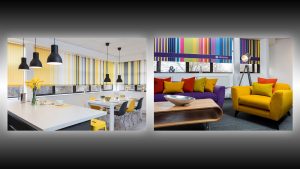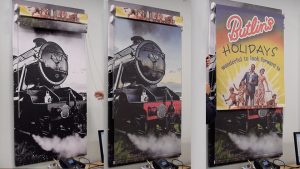Sign Types for Care Homes
- 1. Location or name signs
- 2. Exterior way finding
- 3. Entrance
- 4. Reception
- 5. Interior way finding
- 6. Bedroom Signs
- 7. Feature Rooms Signs
- 8. Wall coverings and blinds
- 9. Planning and design
- 10. Sign Installation
1. LOCATION OR NAME SIGNS
For a new build, refurbishment or even an established care home, you cannot over estimate the importance and commercial advantage of local public awareness within the community. A good percentage of your residents may be of local origin. From a marketing perspective any signage needs to be clear and smart as it will be seen to represent the quality of the care home. When the emergency services attend late at night or a locum doctor, out of hours the attendee may not be familiar with the care home and good clear signage will aid their swift arrival. Good location and home name signage will aid visitors and any perspective relatives from out of area, who may have made contact primarily via the internet, following their sat-navs.
Types of signage
Walk outside your home, imagine you are driving up the road from either direction, What do you see? What stands out? You are looking for the most prominent location for your sign. Your options include:
Post Signs
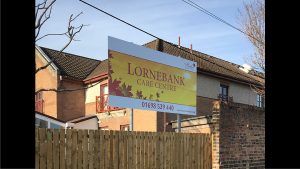
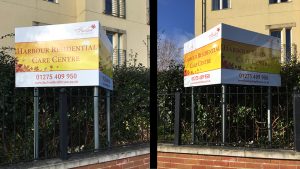
Signs mounted on posts can be manufactured as single sided signs, positioned along the fence line usually at parallel to the road unless you are lucky enough to have a corner plot.If you have space you can mount two post signs to form a V sign, this is very effective catching passing traffic from both directions. Another method is to fit a double sided sign at 90’ to the road providing you have no trees or other obstructions in the way. Two single sided signs positioned at 45’ either side of a relatively clear entrance driveway will present an inviting entrance that is visible from both directions.
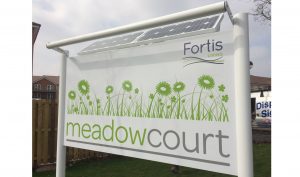

Subject to planning considerations these post signs can be illuminated using either 240v or low voltage solar power. This should be considered in dark rural locations providing the signs are not too bright and does not inconvenience your neighbours. Solar powered signs only work well when they are positioned away from trees and with a clear line of sight to the south.
Wall Signs
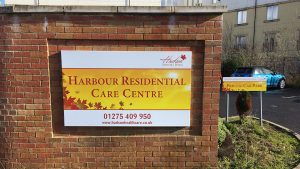

Elevations of you building that are clearly visible from the road can be used to mount a variety of signs types.
Individual lettering


Your home name and logo can be produced as individual letters cut from sheet Perspex and mounted direct to the brickwork using special locator fixings, care must be taken in the choice of colours as to provide contrast with the brickwork or render colour. Stainless steel 3D lettering look very good and creates a very classy look, but can be quite expensive.
Folded tray signs


The modern way to produce a wall sign is to fold up a tray shape (like a large biscuit tin lid) the sign can be any colour or design and it is fixed to the wall by screwing through the edge onto an aluminium angle sub frame. Folded tray signs are very effective and can be produced with either a gloss or matt finish.
Illuminated signs
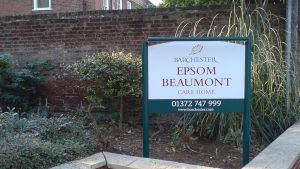
Illuminated signs are rarely used in the care home environment as building mounted location signs, but subject to planning permission a set of built up 3D letters Halo lit can look really special on the right building.
2. Exterior way finding, health and safety signs
Exterior way finding, health and safety signs. Visitors and delivery drivers entering your site must be directed safely to their appropriate destination. Signs can be post mounted and can be positioned at appropriate junctions clearly directing to car park, deliveries or other areas. Car parks may require disclaimer signs, to protect you, in event of damage or theft to or from vehicles.
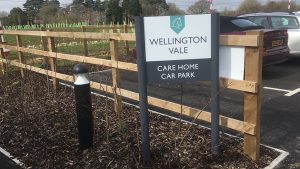
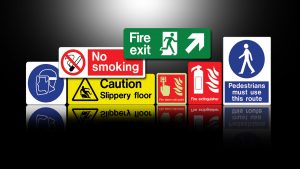
In the case of sheltered or assisted living environments you may wish to allocate parking spaces to particular flats or people. It is your responsibility to provide a safe site and thus you should consider enforcing a 5mph speed limit and in large sites I have known one way systems to be operated. Exterior way finding signs can be wall mounted if there is appropriately positioned wall.

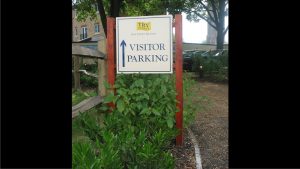
You should denote disabled bays within your site and mark an area for visiting doctors and ambulances. In the case of sheltered or assisted living environments you may wish to allocate parking spaces to particular flats or people.
3. Your main entrance
Close up first impressions, the first thing your residents and in many cases their relatives are aware of is your entranceway. Over the door or adjacent to the entrance I would place a clear good quality sign displaying the home name and possibly the brand if part of a group. This can be in the form of a composite tray sign, a set of cut out individual Perspex letters or if the budget will allow a nice set of 3D stainless steel letters.


Two sets of glass doors are commonly used at the entrance to a modern care home with the lobby between the providing a barrier against the elements. The glass doors require a manifestation under health and safety regulations but why not instead of the standard 50mm dots brand them with a welcome message and your home name and logo.(it still on forms with health and safety regulations.)



4. Reception area
Once entering the Home you can continue to form a good impression with some welcoming graphics on the wall above your reception. These can take the form of printed wall graphics or wall paper, cut out individual letters in Perspex or brushed finish composite and, if the home decor allows, you may consider an edge lit engraved clear acrylic sign.


In your reception area you will also require a home/ lift directory displaying the disposition of the bedrooms and other feature areas (lounges, dining rooms, bars, salon, cinema etc.) You will also need smaller directional signage directing to the rooms and features of the entrance floor.



5. Way finding
Different areas of a home, different wings and floors can be given an identity and a colour scheme that will act as an aid memoir to elderly and dementia residents.
Names such as ‘Bluebell Lane’ (Blue) Primrose Walk (Yellow) and ‘Rose Way’ etc are often used.
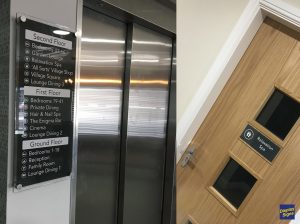
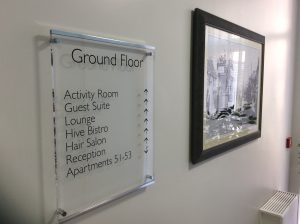
The directory and directional signage in different areas of the home can be colour coded to compliment the names and decor.
Wayfinding signs can be produced both bi-lingual and tactile with special raised lettering for the visually impaired.
6. Bedroom signs
A Residents bedroom is now a residents home, as many have sold their homes to be there, depending on type residents, you can choose to have the doors painted different, but I hope
complimentary, colours add knockers and the faceplate of a letterbox to finish the effect. Memory boxes are another popular addition, especially in dementia homes, where you can
place photos, small items or pictures from the residents past that have special significance.
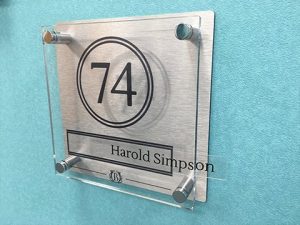
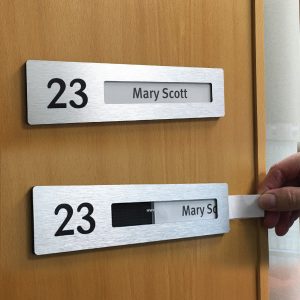
I feel very strongly that the residents bedroom door signs should be made in such a manner that the resident should not feel temporary i.e. not a scrap of paper with their name on slotted into a small cheap card holder as you would find on a school door. Please see various examples below that ‘The Display Signs Group’ have developed and used successfully in many prestigious homes.
7. Feature rooms
A new build home that is aiming for the lucrative private market must be more like a luxury hotel if it is to compete, don’t forget you are marketing to the relatives who are about 30 years younger than your prospective residents.
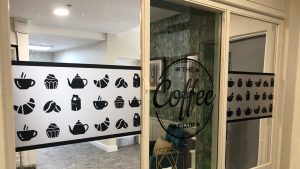
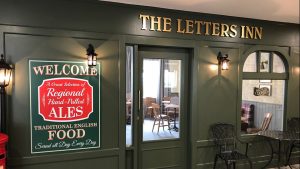
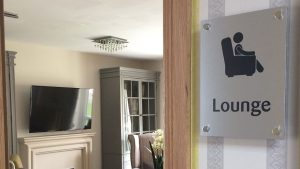
A bar and shops make a good feature, a carpenter can reproduce a simplified street exterior and a good sign maker will be able to manufacture signs and window graphics to complete
the scene. Dining Rooms, Lounges and Cinemas can be named and have frosted logos and graphics on the entrance doors as well as illuminated signs to add ambiance.
8. Wall coverings and blinds
You can spark some wonderful memories and conversation incorporating local historic street scenes and land marks into your decor. These can be printed on digital wallpaper normally in monochrome and displayed on one feature wall in a room or lounge.
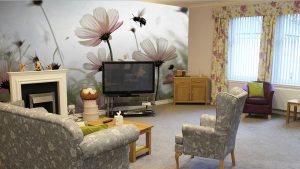
The digital wall covering is installed drops as standard wall paper but now has the advantage of being self-adhesive and repositionable until the adhesive is cured. The wall coverings can be used on any size of wall, with any image either found on the internet or taken on your telephone.
Roller blinds are now available, with printed images or photos and are useful as a simple way of adding interest to a small window. Imagine a picture of a pet dog or cat, a steam train or
even a jar of Bovril.
9. Planning and design
If you are planning, or are close to completing a new build, extension or major refurbishment of your Care Home, sign specialists such as ‘The Display Signs Group’ offer a
complete ‘design from plan’ service.
If you forward copies of your floor plans to their offices the designers will discuss the project with you to ascertain your target market, determine your colours scheme, any logos or special details (they may ask for some photos of specific areas) and will then propose a scheme that will fit in with both your décor and of course your budget.
They provide an illustration, by way of marked up plans, and of course the all important costs. The design service also extends to a complete package with recommendations for all the
signs needed for your home.
10. Installation
Whilst a small quantity of door or interior signs can be installed by a competent maintenance guy, I would recommend for a major scheme you took advantage of the
installation service offered.
For the interior signs ‘The Display Signs Group’ installers use a variety of installation templates to get all the signs positioned at same height, same relative position to the door
frames etc.
The exterior signs can include excavating sometimes large holes or working at height so again it is better left to the professionals with the correct insurance and training.

